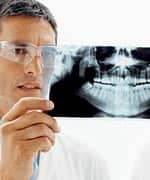Life Extension Magazine®
Even health-conscious people may be surprised to learn that gum disease is the most common disease of all in adults, affecting an estimated 80% of Americans over the age of 35. As researchers investigate the causes and effects of gum diseases such as gingivitis and periodontitis, they are uncovering startling links between poor oral health and many chronic diseases that afflict aging adults. Mounting research studies indicate that poor oral health frequently accompanies or contributes to a wide array of systemic illnesses such as heart disease, stroke, diabetes, and arthritis. Maintaining optimal oral health not only will give you a brighter, healthier smile, but also may help you fend off many potentially deadly diseases. By safeguarding the health of your teeth and gums through healthy diet and lifestyle, proper brushing and flossing, and targeted nutritional strategies, you increase your odds of living a long and healthy life. Poor Gums, Poor HealthAccording to a recent report from the federal Centers for Disease Control and Prevention, researchers have uncovered potential links between periodontal disease and many serious health conditions. The reason, according to many medical experts, is that the bacteria that contribute to gingivitis and periodontitis provoke inflammation or infection, which can trigger certain diseases. Periodontal disease may even aggravate or worsen existing health conditions. This article discusses the most common ailments associated with gum disease, along with novel approaches to optimize your oral health.
Heart disease. Researchers have discovered that people with periodontal disease are much more likely to suffer from coronary artery disease than those without the disease. A 2004 study in the Journal of Periodontology found that 91% of 108 patients with cardiovascular disease suffered from moderate to severe periodontitis, compared to 66% of the non-cardiac patients.7 Scientists have advanced several theories to explain the link between periodontal disease and heart disease. One theory holds that inflammation caused by periodontal disease leads to impaired functioning of the vascular endothelium, which contributes to arterial disease.8 Still another hypothesis is based on several studies showing that periodontal infections can be correlated with increased levels of inflammatory mediators, such as fibrinogen, C-reactive protein, or cytokines, which have been correlated with increased risk of cardiovascular disease.9,10 In a pilot study reported in early 2006, investigators found that treating moderate to severe periodontal disease in 22 otherwise healthy adults led to significant improvements in endothelial function, as well as decreases in interleukin-6, an inflammatory cytokine. Periodontal treatment was also associated with reductions in C-reactive protein.8 Although more studies are needed, these findings suggest that treating periodontal disease not only boosts oral hygiene, but also improves several measures of cardiovascular health. Stroke. The presence of gum disease also may increase risk of stroke. Previous research found that the severity of gum disease is proportionally related to the amount of arterial plaque located in the carotid arteries, the two major arteries on each side of the neck that supply blood to the brain. Blockage here may reduce blood flow to the brain or advance blood clots, which can lead to a stroke. A 2005 study from the University of Minnesota found a direct link between high levels of bacteria that cause gum disease and thickness of the carotid arteries. This research stands out as the first to link atherosclerosis with the type of bacteria that causes gum disease, and not with other oral bacteria.11
Diabetes. Diabetes is associated with increased risk of infection, which may include oral infections such as periodontitis. Researchers have noted that periodontal disease is a common complication of diabetes.12 In fact, people with type I or type II diabetes are more susceptible to severe, progressive periodontal disease than non-diabetic individuals.13,14 Studies suggest that periodontal disease may adversely affect blood sugar control in people with diabetes. Controlling periodontal infection in diabetic individuals has been found to help improve blood sugar control, as measured by a decreased demand for insulin and decreased levels of hemoglobin A1C, a marker of long-term blood sugar control.12 Measures to combat complications of diabetes, especially periodontitis and gingivitis, may be important in reducing additional systemic inflammatory burden, thus potentially preventing other conditions such as cardiovascular disease.12 Premature and low-weight births. New findings indicate that gum disease can affect the health of pregnant women and their unborn children. A University of Chile study found that women with gingivitis were at higher risk of delivering premature infants and low-weight babies than women with healthier gums. The likely reason is that periodontitis or gingivitis bacteria contribute to an inflammatory response of the placental membrane, which may induce preterm labor. Periodontal treatment reduced the risk of premature and low-weight births in women with pregnancy-related gum disease.15 Other conditions. Gum disease may also contribute to other physical problems. For instance, some evidence suggests that periodontal disease may contribute to lung infections like pneumonia, or may worsen chronic conditions such as emphysema.16 Experts believe this may be due to oral bacteria that move into the airways of the throat and lungs. Poor oral health may also accompany poor joint health. People with moderate to severe periodontitis experience an increased risk of rheumatoid arthritis.17 Gum disease is also present in many patients who suffer from juvenile idiopathic arthritis.18 | ||||||
How to Brush Away Gum DiseaseThe best way to fight gum disease and avoid periodontitis is to stop it before it starts. This means adopting a lifestyle that includes a healthy diet, regular exercise, daily brushing and flossing, and a visit to your dentist at least every six months. Just devoting yourself to a diet that includes plenty of fruits and vegetables, along with regular exercise (five sessions of moderate activity or three of vigorous intensity each week), can reduce your chance of developing periodontitis by 40%.19
A review of 50 years of clinical trial data found that when it comes to proper brushing, brushing twice a day is optimal.20 Common sense might dictate that the longer and harder you brush, the better your likelihood of eliminating plaque. However, a group of European scientists discovered that the optimal method is to brush for about two minutes at medium force (150 grams of pressure) using a power toothbrush. They added that brushing longer and using more than 150 grams of pressure offered little additional benefit in removing plaque and that more vigorous cleaning may in fact be harmful. Heavy brushing may damage gums and wear down teeth, both of which can lead to oral health problems.21 Another recent study found that power (electric or electronic) toothbrushes were superior to manual ones in removing plaque and reducing gingivitis.22 Nutrients for Healthy GumsYour toothpaste is a crucial weapon in the fight against gum disease. Many ingredients are effective in controlling gingivitis and promoting oral health. These include coenzyme Q10, xylitol, hydrogen peroxide, lactoferrin, folic acid, and squalene, as well as natural agents such as tea tree oil, green tea extract, and essential oils. Their benefits in helping to prevent gum disease are supported by the latest scientific research. Coenzyme Q10. The antioxidant compound CoQ10 aids energy production in the body. Research has found that the gum tissue of people with periodontal disease is often significantly deficient in CoQ10.23 Initial evidence suggests that topical CoQ10 supplements may be effective in slowing periodontitis by reducing bleeding and swelling.24 While additional research is needed, the consensus is that CoQ10 helps supply the energy needed for the body to heal and repair mouth tissue.
Xylitol. Pure xylitol is a white crystalline substance that resembles and tastes like sugar. It is found naturally in fruits such as plums, strawberries, and raspberries. Xylitol is used commercially to sweeten sugarless gum and candies. It has 40% fewer calories than regular sugar and appears to have none of sugar’s negative effects on insulin release.25 It is also believed to prevent cavities by inhibiting the growth of cavity-causing bacteria such as Streptococcus mutans.26 A double-blind, placebo-controlled study of 2,630 children compared a standard fluoride toothpaste with one that also contained 10% xylitol. Over a three-year period, children given the xylitol-enriched toothpaste developed notably fewer cavities than those using the fluoride-only toothpaste.27 Hydrogen peroxide. Commonly used in toothpastes and whitening gels to help eliminate stains and brighten teeth, hydrogen peroxide is also added to some mouthwashes to reduce gingivitis and whiten teeth.28 Its foaming action works to carry away food particles and bacteria from gum tissue. While higher concentrations of the whitening agents hydrogen peroxide and carbamide peroxide may damage tooth enamel, recent findings suggest that the concentrations of these agents found in over-the-counter dental care products pose negligible risk to tooth enamel.29 Hydrogen peroxide has been associated with DNA-damaging effects in some animal and cell studies; however, a recent review noted that dental care products containing hydrogen peroxide are unlikely to damage DNA in humans, and that such products can be used safely by the general population.30 Lactoferrin. Lactoferrin, a naturally occurring antimicrobial agent, is found in saliva and gingival fluid, as well as in breast milk, tears, and other bodily fluids. Lactoferrin may bind to and slow the growth of periodontitis-associated bacteria.31 In an animal study, locally applied lactoferrin powder appeared to support the healing of oral lesions.32
Folic acid. The body relies on folic acid for red blood cell production. Folic acid is the most commonly deficient B vitamin. A lack of folic acid can increase the risk of gingivitis, tongue inflammation, and periodontitis. Studies have shown that rinsing with 5 ml of mouthwash containing 5 mg of folic acid for one minute, twice daily, can improve gingivitis symptoms, including gum redness and bleeding.33 A 2004 study from India found that children who used folic acid along with proper oral hygiene practices reduced their incidence and severity of gingival overgrowth related to prescription drug use compared to a group that practiced only basic oral care.34 Tea tree oil. A recent study in the Australian Dental Journal showed that a toothpaste gel containing tea tree oil, used twice daily, reduces the presence of gingivitis compared to placebo.35 Tea tree oil’s anti-flammatory and antimicrobial properties may be responsible for its effects in promoting oral health. Squalene. Extracted from shark liver oil, squalene has been embraced for its antioxidant properties. Squalene has been used as an adjunct therapy in the management of some cancers. A recent study found high doses of squalene to be beneficial against bacterial, viral, and fungal infections.36 Essential oils. Natural essential oils from cinnamon leaf, peppermint, and clove leaf act as natural breath fresheners. Steven Green, DDS, notes these natural oils “work longer than other similar ingredients used by many commercial toothpastes because they can soak into the gums and tissue.” Green tea extract. Long em-braced for its antioxidant properties, green tea may also offer benefits for oral health. Green tea extract has been shown to help ease swollen gums in adults.37 ConclusionThere are many ways to improve one’s health: eating a healthy diet, exercising regularly, and periodically visiting your doctor. Health-conscious adults should add proper oral hygiene to this list of health fundamentals. Oral hygiene is a simple way to improve your well-being today and greatly increase your chances of enjoying a healthy, disease-free future. | |||
| References | |||
| 1. Albandar JM, Brunelle JA, Kingman A. Destructive periodontal disease in adults 30 years of age and older in the United States, 1988-1994. J Periodontol. 1999 Jan;70(1):13-29. 2. Nishida M, Grossi SG, Dunford RG, et al. Calcium and the risk for periodontal disease. J Periodontol. 2000 Jul;71(7):1057-66. 3. Nishida M, Grossi SG, Dunford RG, et al. Dietary vitamin C and the risk for periodontal disease. J Periodontol. 2000 Aug;71(8):1215-23. 4. Staudte H, Sigusch BW, Glockmann E. Grapefruit consumption improves vitamin C status in periodontitis patients. Br Dent J. 2005 Aug 27;199(4):213-7. 5. Michalowicz BS, Diehl SR, Gunsolley JC, et al. Evidence of a substantial genetic basis for risk of adult periodontitis. J Periodontol. 2000 Nov;71(11):1699-707. 6. Niederman R, Westernoff T, Lee C, et al. Infection-mediated early-onset periodontal disease in P/E-selectin-deficient mice. J Clin Periodontol. 2001 Jun;28(6):569-75. 7. Geerts SO, Legrand V, Charpentier J, Albert A, Rompen EH. Further evidence of the association between periodontal conditions and coronary artery disease. J Periodontol. 2004 Sep;75(9):1274-80. 8. Elter JR, Hinderliter AL, Offenbacher S, et al. The effects of periodontal therapy on vascular endothelial function: a pilot trial. Am Heart J. 2006 Jan;151(1):47. 9. Mattila K, Vesanen M, Valtonen V, et al. Effect of treating periodontitis on C-reactive protein levels: a pilot study. BMC Infect Dis. 2002 Dec 10;2:30. 10. Han SJ, Jeong SY, Nam YJ, Yang KH, Lim HS, Chung J. Xylitol inhibits inflammatory cytokine expression induced by lipopolysaccharide from Porphyromonas gingivalis. Clin Diagn Lab Immunol. 2005 Nov;12(11):1285-91. 11. Desvarieux M, Demmer RT, Rundek T, et al. Periodontal microbiota and carotid intima-media thickness: the Oral Infections and Vascular Disease Epidemiology Study (INVEST). Circulation. 2005 Feb 8;111(5):576-82. 12. Available at: http://clinical.diabetesjournals.org/ cgi/content/full/23/4/171. Accessed January 13, 2006. 13. Campus G, Salem A, Uzzau S, Baldoni E, Tonolo G. Diabetes and periodontal disease: a case-control study. J Periodontol. 2005 Mar;76(3):418-25. 14. Salvi GE, Kandylaki M, Troendle A, Persson GR, Lang NP. Experimental gingivitis in type 1 diabetics: a controlled clinical and microbiological study. J Clin Periodontol. 2005 Mar;32(3):310-6. 15. Lopez NJ, Da S, I, Ipinza J, Gutierrez J. Periodontal therapy reduces the rate of preterm low birth weight in women with pregnancy-associated gingivitis. J Periodontol. 2005 Nov;76(11 Suppl):2144-53. 16. Scannapieco FA, Ho AW. Potential associations between chronic respiratory disease and periodontal disease: analysis of National Health and Nutrition Examination Survey III. J Periodontol. 2001 Jan;72(1):50-6. 17. Mercado FB, Marshall RI, Bartold PM. Inter-relationships between rheumatoid arthritis and periodontal disease. A review. J Clin Periodontol. 2003 Sep;30(9):761-72. 18. Welbury RR, Thomason JM, Fitzgerald JL, et al. Increased prevalence of dental caries and poor oral hygiene in juvenile idiopathic arthritis. Rheumatology (Oxford). 2003 Dec;42(12):1445-51. 19. Al-Zahrani MS, Borawski EA, Bissada NF. Periodontitis and three health-enhancing behaviors: maintaining normal weight, engaging in recommended level of exercise, and consuming a high-quality diet. J Periodontol. 2005 Aug;76(8):1362-6. 20. Anon. Study: fluoride toothpaste significantly reduces childhood cavities. Dent Today. 2003 Feb;22(2):44. 21. McCracken GI, Janssen J, Swan M, et al. Effect of brushing force and time on plaque removal using a powered toothbrush. J Clin Periodontol. 2003 May;30(5):409-13. 22. Zimmer S, Strauss J, Bizhang M, et al. Efficacy of the Cybersonic in comparison with the Braun 3D Excel and a manual toothbrush. J Clin Periodontol. 2005 Apr;32(4):360-3. 23. Gaby AR. Coenzyme Q10. In: Pizzorno JE, Murray MT, eds. Textbook of Natural Medicine. Seattle, WA: Bastyr University Press; 1998. 24. Hanioka T, Tanaka M, Ojima M, Shizukuishi S, Folkers K. Effect of topical application of coenzyme Q10 on adult periodontitis. Mol Aspects Med. 1994;15 Suppl:s241-8. 25. Salminen S, Salminen E, Marks V. The effects of xylitol on the secretion of insulin and gastric inhibitory polypeptide in man and rats. Diabetologia. 1982 Jun;22(6):480-2. 26. Thaweboon S, Thaweboon B, Soo-Ampon S. The effect of xylitol chewing gum on mutans streptococci in saliva and dental plaque. Southeast Asian J Trop Med Public Health. 2004 Dec;35(4):1024-7. 27. Sintes JL, Escalante C, Stewart B, et al. Enhanced anticaries efficacy of a 0.243% sodium fluoride/10% xylitol/silica dentifrice: 3-year clinical results. Am J Dent. 1995 Oct;8(5):231-5. 28. Hasturk H, Nunn M, Warbington M, Van Dyke TE. Efficacy of a fluoridated hydrogen peroxide-based mouthrinse for the treatment of gingivitis: a randomized clinical trial. J Periodontol. 2004 Jan;75(1):57-65. 29. Pugh G Jr, Zaidel L, Lin N, Stranick M, Bagley D. High levels of hydrogen peroxide in overnight tooth-whitening formulas: effects on enamel and pulp. J Esthet Restor Dent. 2005;17(1):40-5;discussion 46-7. 30. Munro IC, Williams GM, Heymann HO, Kroes R. Tooth whitening products and the risk of oral cancer. Food Chem Toxicol. 2006 Mar;44(3):301-15. 31. Kalfas S, Andersson M, Edwardsson S, Forsgren A, Naidu AS. Human lactoferrin binding to Porphyromonas gingivalis, Prevotella intermedia and Prevotella melaninogenica. Oral Microbiol Immunol. 1991 Dec;6(6):350-5. 32. Addie DD, Radford A, Yam PS, Taylor DJ. Cessation of feline calcivirus shedding coincident with resolution of chronic gingivostomatitis in a cat. J Small Anim Pract. 2003 Apr;44(4):172-6. 33. Pack AR. Folate mouthwash: effects on established gingivitis in periodontal patients. J Clin Periodontol. 1984 Oct;11(9):619-28. 34. Prasad VN, Chawla HS, Goyal A, Gauba K, Singhi P. Folic acid and phenytoin induced gingival overgrowth—is there a preventive effect. J Indian Soc Pedod Prev Dent. 2004 Jun;22(2):82-91. 35. Soukoulis S, Hirsch R. The effects of a tea tree oil-containing gel on plaque and chronic gingivitis. Aust Dent J. 2004 Jun;49(2):78-83. 36. Lewkowicz P, Banasik M, Glowacka E, Lewkowicz N, Tchorzewski H. Effect of high doses of shark liver oil supplementation on T cell polarization and peripheral blood polymorphonuclear cell function. Pol Merkuriusz Lek. 2005 Jun;18(108):686-92. 37. Krahwinkel T, Willershausen B. The effect of sugar-free green tea chew candies on the degree of inflammation of the gingiva. Eur J Med Res. 2000 Nov 30;5(11):463-7. |





